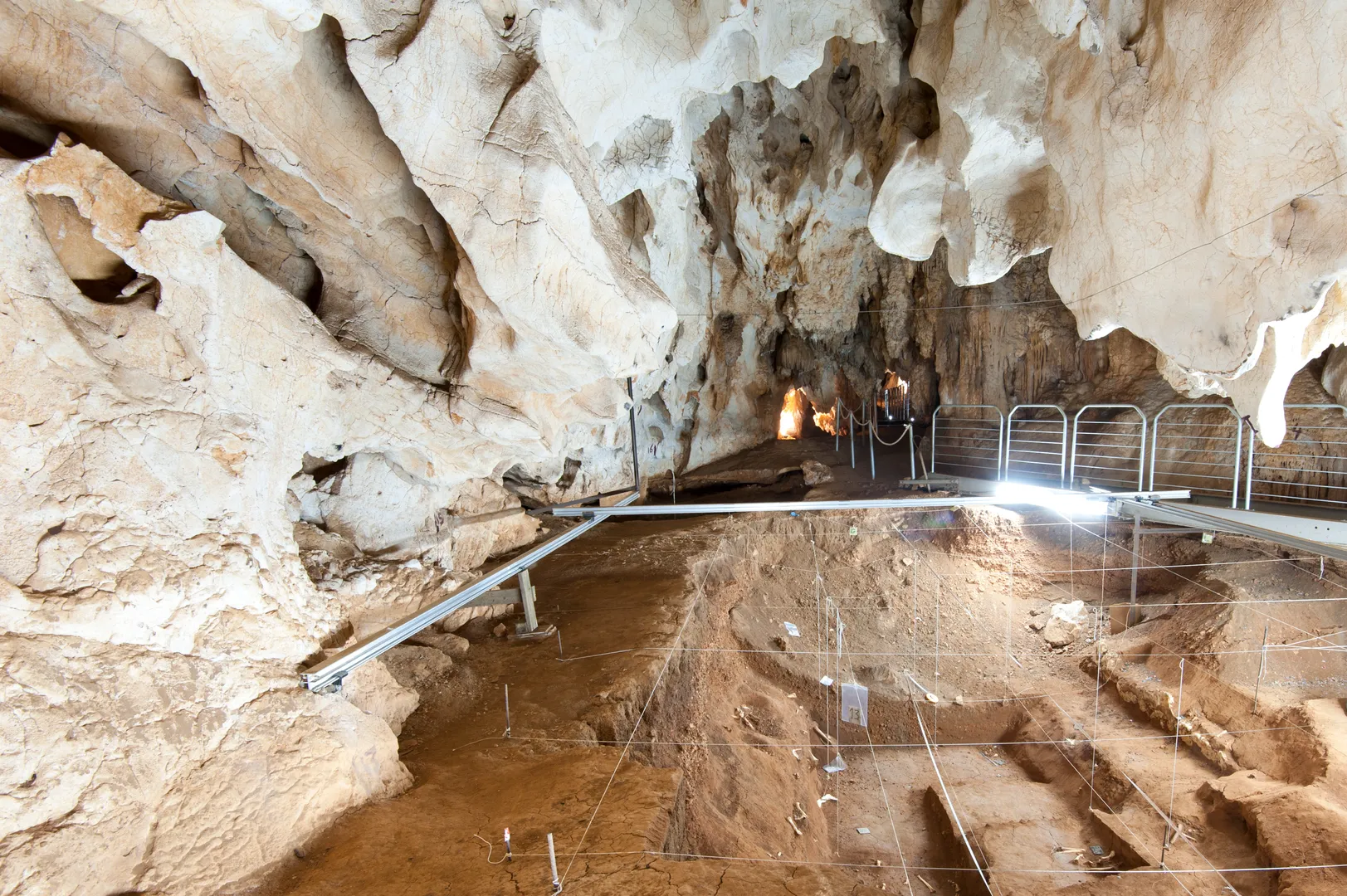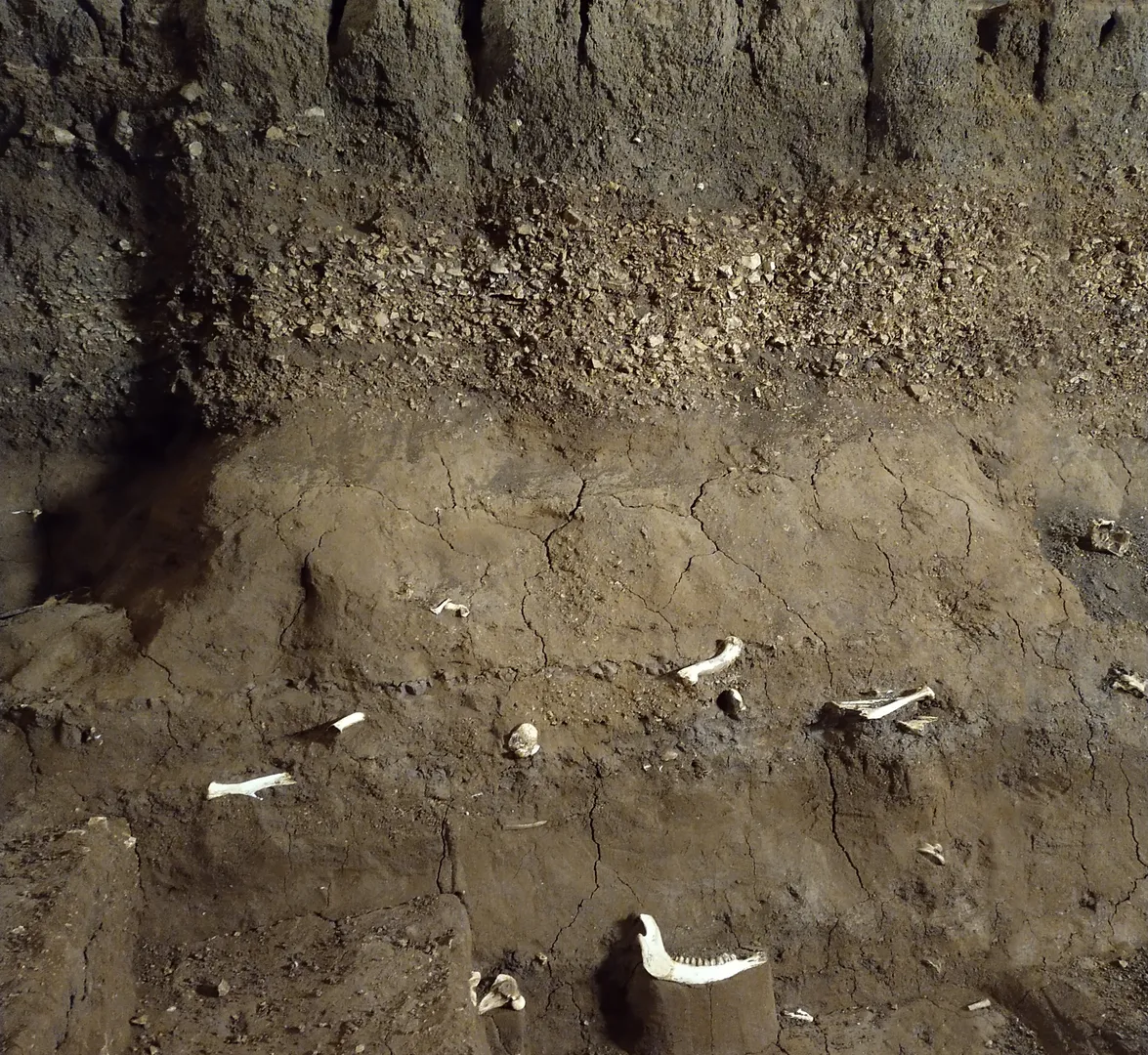Grotta Corbeddu
One of the oldest testimonies of human presence in Sardinia, with artifacts dating back to the Paleolithic.

Grotta Corbeddu
Grotta Corbeddu
Contact
- Cooperativa Corrasi
- [email protected]
- Website
- +393397126111
Access information
In the territory of Oliena, the cave opens on one of the walls that border the Lanaitho Valley, which extends for about 7 km nestled in the last offshoots of the limestone formations of the Supramonte.
From Oliena, take the SP46 following the signs for “Lanaitho Valley and Su Gologone” (2.4 km). From Su Gologone, follow the road for about 6.6 km to the Sa Ohe Refuge, where the ticket office is located. From the reception point, climbing on foot along a steep path, you reach the cave after 8-10 minutes of trekking.
Grotta Corbeddu is carved in one of the rocky faces of the Lanaitho valley, that extends for about 7 km, located in the last ends of the Supramonte limestone formations.
The cave is not crossed by groundwater, it enjoys extensive visual control over the Lanaitho valley up to its natural entrance, it has good exposure to the sun and winds, and is therefore suitable for human settlement. It consists of three easily accessible rooms, where excavation trials area clearly visible and the exposed sections show the stratigraphic succession that allowed the reconstruction of human presence in the cave from the Late Paleolithic Age.
Therefore, the use of the site has a major educational value to study the methods of the modern archeology.
The investigations carried out at Grotta Corbeddu proved the presence of Sardinian population in phases prior to the Neolithic Age, mainly thanks to the discovery of a maxilla and a temporal bone in Layer 2 of Room 2 (C14-dated about 8750 BP) and a phalanx (22,000 BP). These phases include the tools made of local stone (blades, scrapers, burins, flaked and indented, dating between 14500-12500 BP and 9000 BP) and the remains of Pleistocene fauna including a lagomorph (Prolagus sardus), a canid (Cynoterium sardous), two extinct rodents (Tyrrhenicola henseli and Ragamys orthodon) and a cervid with impressive antlers (Megaceros cazioti).
After relocating at two different times (Early Neolithic, C14-dated between 8040±140 BP and Middle Neolithic, between 6260±180 BP), settlers continued to chip the flint and obsidian of Monte Arci to manufacture their tools and weapons for hunting and harvesting.
Animal species introduced in the Neolithic further changed the habitat and eliminate Pleistocene species, with the exception of the Prolagus, that became extinct in the Nuragic Age.
Ceramic vessels featuring the typical elbow loops found in Room 1 document a small human settlement associated with the Bonnanaro culture.
The cave is known for having given shelter to bandit Giovanni Corbeddu Salis (1854-1898), who left the drawing of a scale and his signature. Having been known since the early twentieth century for the discovery of Pleistocene animals, since 1982 it has been studied during excavation campaigns conducted by the Paul Soondar’s team from the Utrecht University, in collaboration with the Archaeological Superintendence for the Provinces of Sassari and Nuoro. The site has uncovered human evidence relating to the Late Paleolithic, Mesolithic, Neolithic, Early Bronze Age and the 19th century.
Bibliography
- Salis G. 2023, La grotta Corbeddu, Oliena (Nu), in G. Tanda, L. Doro, L. Usai, F. Buffoni (eds.), Arte e architettura nella Sardegna preistorica. Le domus de janas (candidatura unesco 2021), Cagliari: 238-241.


